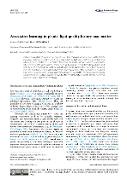Associative learning in plants: light quality history may matter

Datum vydání
2022Publikováno v
BiocellRočník / Číslo vydání
46 (3)ISBN / ISSN
ISSN: 0327-9545Metadata
Zobrazit celý záznamKolekce
Tato publikace má vydavatelskou verzi s DOI 10.32604/biocell.2022.018114
Abstrakt
The possibility of associative learning in plants is a topic of ongoing controversy. In one published study, growing pea plants were reported to associate two stimuli (airflow and light) and thereafter use one (airflow) as an indicator for the other (light), similar to dogs in Pavlov's famous experiments. However, this observation could not be independently repeated. Here we examine a possible reason for the failure of a published reproduction attempt, which used substantially different light quality during plant cultivation prior to experimental treatments than in the original study. This could have resulted in dramatically different growth characteristics. While the relevance of the original report of plant associative learning remains questionable, greater attention should be paid to good documenting and standardizing the light conditions, in particular spectral quality, not only in studies of plant learning and memory, but also in other areas of experimental plant biology.
Klíčová slova
Classical conditioning, Light quality, Phototropism, Replicability, Reproducibility
Trvalý odkaz
https://hdl.handle.net/20.500.14178/1942Licence
Licence pro užití plného textu výsledku: Creative Commons Uveďte původ 4.0 International






